With spring well underway here in Seattle, new life is popping up everywhere from the flowering trees to the blooms lining the sidewalks and edges. Cherry Blossoms, magnolias, rhododendrons, daffodils, hyacinth, and more recently even tulips are making an appearance. Leaves are sprouting all over adding some much needed color to the dull backdrop of the winter months.
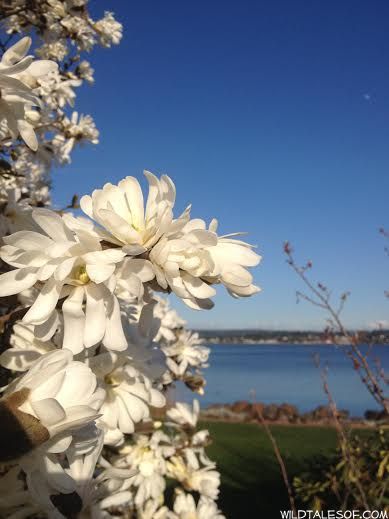
Along with the glory of a bursting natural world, we’ve also had some wet and wild weather (not uncommon for Western, Washington)! All that rain and wind means treasures are falling to the ground just waiting for us investigate, which is exactly what sparked a more focused nature walk. Rather than our usual meandering around the neighborhood, we studied the ground looking for fallen objects and noticed their features.
A Spring Nature Walk in the City
1. Set the purpose: To look on the ground for fallen natural objects. Time limits and distance can also be decided here.
2. Start walking! Look on sidewalks, in the grass, below trees, along trails, and in flowerbeds for natural treasures:
- flowers (and petals)
- leaves
- cones (pine, spruce, fir, etc.)
- rocks
- sticks
- nuts
- branch pieces
- clusters of tree needles
3. Collect. Have a bag to store the items you find, and encourage explorers to select varied items. Depending on the length and time of your walk, it might be a good idea to set a limit on items collected as to not go overboard!
Note: Make sure to set boundaries about picking and the the property of others. Know the rules of the area you are walking in. Since our walk was around the neighborhood (and our own yard), I felt okay about collecting items that had fallen.
Sorting the Natural Treasures
Lately, Bergen (2.5 years old) has demonstrated a love of (or interest in) sorting. When playing independently, I often find him lining up his matchbox cars, placing them in various containers, and he’s even started (thanks to his dad) arranging them by color. After some quick research, I learned that this is a typical part of young toddler development. Accordingly, as an extension to our nature collecting, when we returned from our walk, we used a tray to sort the items into categories.
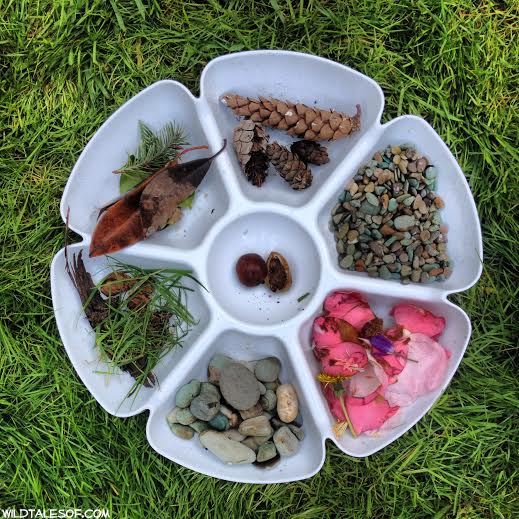
So many ideas can emerge from sorting and with enough objects, one category could then be sorted into a whole other set of groups such as color, size and texture. Can you see some of the categories we created?
Have you been on a nature walk lately? How is spring showing itself in your neck of the woods?
Come join the conversation! You can keep up to date with each and every post by subscribing to the blog via email. We’d also love to have you join us on all of our adventures by “liking” our facebook page and following us on twitter! If you enjoyed this post, please “like it”, “tweet it” or “pin it”!

 What are the Best Seattle Area Kid Friendly Hikes?
What are the Best Seattle Area Kid Friendly Hikes?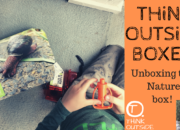 How to Investigate a Nurse Log with Kids: Think Outside Boxes Nature Box
How to Investigate a Nurse Log with Kids: Think Outside Boxes Nature Box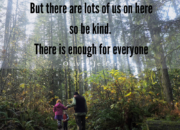 Be Kind+News & Inspiration//16
Be Kind+News & Inspiration//16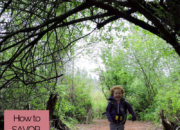 Savoring the Season with Spring Bucketlist: 2019 Edition
Savoring the Season with Spring Bucketlist: 2019 Edition
What a great idea! That tray is fun for children to use when they sort. I’ve bought similar ones at the dollar store for outdoor and children’s parties. I can think of many applications for math and science with my elementary students.
Thanks, Martie! Yes, I found the tray we used for the sort at our Goodwill–such a great resource and very inexpensive. I’m thinking we will get a lot of use out of it as like you said, there are so many applications!
I have that exact tray! Now I know how to use it for something beside veggies and dip. 🙂
Zoë and I are going to take a nature walk next week so your post is perfect in its timing.